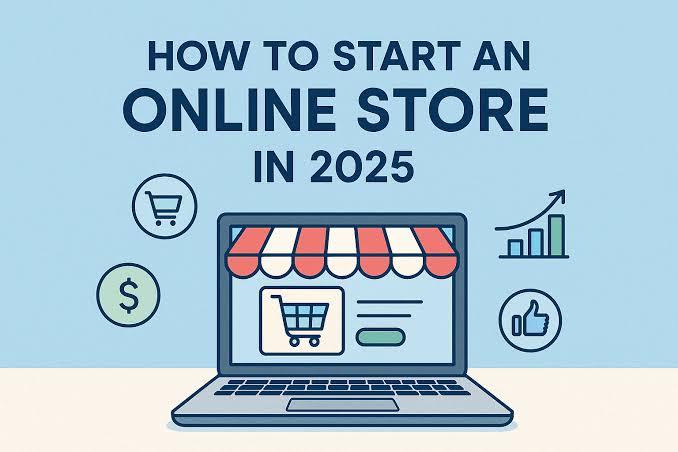How to Start an Online Store with No Tech Skills in 2025

Imagine waking up, making your morning coffee, and seeing that you made sales while you slept. In 2025, this dream is more possible than ever, even if you have zero tech skills. Thanks to easy-to-use tools, starting an online store is no longer just for computer whizzes or big companies. Anyone can do it. You don’t need to know how to code, design websites, or spend a fortune on experts. Modern e-commerce platforms are designed for beginners, with drag-and-drop features, simple templates, and step-by-step guides that walk you through every part of the process.
Why is this such a big deal? Because running an online store offers life-changing benefits. You set your own hours, work from anywhere, and reach customers all over the world. Startup costs are low, sometimes close to zero, because you don’t need to rent a shop, hire staff, or buy loads of inventory upfront. Whether you want a side hustle or a full-time business, an online store gives you flexibility, freedom, and the chance to turn your passion into profit.
This article will show you exactly how to start an online store with no tech skills in 2025. We’ll break down every step, from choosing what to sell, to getting your first customer. Let’s get started!
How to Start an Online Store with No Tech Skills in 2025
Before we dive in, here’s a quick note: You don’t need to be a tech expert or have a big budget to launch your online shop. Most platforms are built for beginners, and you can use free tools for almost every step. The most important thing is to start, don’t let fear or confusion hold you back.
Here’s how to start an online store with no tech skills in 2025:
1. Decide What You Want to Sell
The first step in how to start an online store with no tech skills is to decide what you want to sell. This can be something you love, know about, or something many people want to buy.
You don’t have to keep products in your home or buy a lot of stock. Here are some easy ways to sell without needing to store products:
- Dropshipping: You sell products on your website, but the supplier sends the products directly to your customers. You don’t handle the items yourself.
- Print-on-demand: You create designs for things like t-shirts, mugs, or bags. When someone buys, a company prints and ships the product for you.
- Digital products: You can sell e-books, online courses, or music files. These don’t need shipping at all.
To find good ideas, use free tools like Google Trends to see what’s popular, or join Facebook groups and Reddit to learn what people are interested in.
Read Next: Consulting That Moves You Forward: Why the Right Guidance Changes Everything
2. Find Your Target Audience and Niche
Once you know what to sell, think about who will buy it. This is called your target audience. Knowing your audience helps you sell better and reach the right people.
Ask yourself:
- How old are my customers?
- What do they like or need?
- Where do they live?
It’s best to focus on a small group of people, called a niche. For example, instead of selling “pet supplies,” sell “eco-friendly toys for small dogs.” This helps you stand out from big stores and makes it easier to connect with customers.
Make a simple profile of your ideal customer. For example: “Emma is 30, loves her dog, cares about the environment, and shops online.”
3. Choose an Easy Online Store Platform
You don’t need to build a website from scratch. Many websites help you create an online store without any tech skills.
Here are some beginner-friendly platforms:
- Shopify: Very easy to use and popular for online stores.
- Wix: A drag-and-drop website builder with online store options.
- WooCommerce: Works with WordPress and is beginner-friendly.
- BigCommerce: Another simple platform for selling online.
Most platforms offer free trials or free plans so you can try them before paying.
4. Set Up Your Online Store
Now it’s time to create your store.
- Sign up for an account on your chosen platform.
- Pick a free or simple design template that looks nice.
- Add your store name and logo. Don’t worry if you don’t have a logo, you can make one for free using tools like Canva.
- Fill in your business details like your email and phone number.
Most platforms will guide you step-by-step, so you don’t get confused.
5. Add Your Products
Next, add the products you want to sell.
- Upload clear photos. Use your phone or free images online.
- Write simple, honest descriptions. Tell customers what the product is and why they should buy it.
- Set prices. Look at what similar products cost and pick a fair price.
- Organize products into categories if you have many.
If you use dropshipping or print-on-demand, connect your supplier to your store so products update automatically.
6. Set Up Payments and Shipping
To sell, you need to accept payments and deliver products.
- Set up shipping options. Many platforms let you choose simple shipping rates or free shipping.
- Add tax information if needed. The platform usually helps with this.
If you sell digital products, you don’t need to worry about shipping.
7. Make Your Store Live
Before opening your store to the public:
- Preview your store to check for mistakes or missing information.
- Fix any errors.
- Publish your store so people can visit it.
You can start with a free website address (called a subdomain) from your platform. Later, you can buy your own domain name like www.yourstorename.com.
8. Get Your First Visitors and Customers
Now that your store is live, you want people to visit and buy from you.
Here are some free ways to get visitors:
- Share your store on Facebook, Instagram, and other social media.
- Tell your friends and family to share it too.
- Join groups or forums related to your products and share helpful information (don’t just sell!).
- Start a simple blog about your products or niche.
- Ask your first customers for reviews. Good reviews help build trust.
It might take time, but keep sharing and talking about your store.
9. Improve and Grow Your Store
Once you start getting visitors and sales, keep improving.
- See which products sell best.
- Listen to what customers say.
- Add new products or improve your website.
- When you make money, think about paying for ads to reach more people.
Remember, your store will get better over time as you learn.
Extra Tips on How to Start an Online Store with No Tech Skills
- Use free tutorials and videos from your platform.
- Join online groups for new store owners to get advice.
- Be patient, success takes time.
- Keep things simple and don’t try to do everything at once.
Conclusion
Now you know how to start an online store with no tech skills in 2025. It’s easier than ever, and you don’t need to be a computer expert. With simple tools and free resources, you can build your store, sell products, and reach customers worldwide. The most important thing is to start now, learn as you go, and keep improving. Your online store can grow step by step, and you can succeed without any tech skills.
Frequently Asked Questions
1. Can I really start an online store with no tech skills?
Yes. Many platforms are made for beginners. You just follow simple steps, and you don’t need to know coding or design.
2. How much money do I need to start?
You can start with very little money using free plans and dropshipping or print-on-demand models that don’t need inventory.
3. How do I pick the right product to sell?
Choose something you like or that many people want. Use free tools like Google Trends or Facebook groups to find ideas.
4. How can I get customers without paying for ads?
Share your store on social media, join online groups, ask friends to help, and write helpful blog posts. These free methods can bring visitors to your store.
